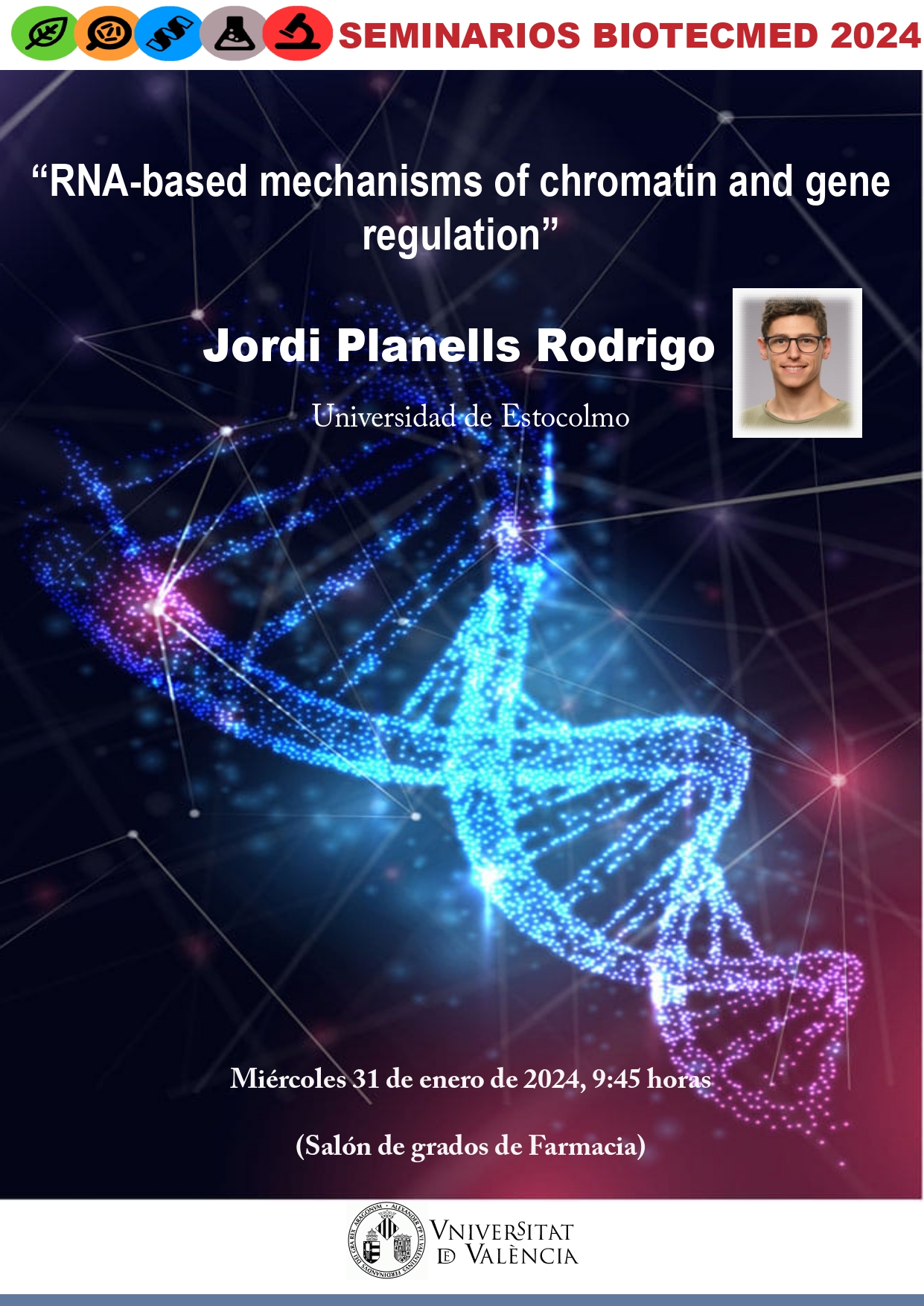
Este miércoles día 31 de enero el invetigador invitado Dr. Jordi Planells Rodrigo de la Universidad de Estocolmo dará una charla con el título: RNA-based mechanisms of chromatin and gene regulation
Será a les 9:45h en el SALÓN DE GRADOS DE FARMÁCIA
Resúmen de la charla
Cells regulate gene expression in a spatio-temporal manner by executing specific transcriptional programs. The regulation of how, when and which information is accessed in the DNA is vital for the normal biological function of cells and organisms. The classic approach for studying gene expression has focused on the proteins involved in chromatin regulation, transcription and post-transcriptional gene expression events. Recent research has shown RNAs also play an important role in the regulation of specific gene expression programs. In the first study, we have investigated the role of the RNA exosome in the degradation of RNA on chromatin, and we have tried to understand the importance of this phenomenon in regulation of chromatin accessibility. To address this question, we profiled the chromatin-associated transcriptome of Drosophila melanogaster S2 cells in control cells and in cells depleted of RRP6 and DIS3, the two RNA exosome catalytic subunits. To measure chromatin compaction, we performed ATAC-seq and asked whether the deregulation of the chromatin-associated transcriptome had any impact on chromatin compaction. We have identified a subset of genes involved in development and morphogenesis the regulation of which is dependent on the RNA exosome. These genes are characterized by the presence of Polycomb and Trithorax factors, suggesting that RNA degradation by the RNA exosome is necessary to maintain the homeostasis of balanced chromatin states. In the second study, we have characterized the function of ADAR3, a member of the adenosine deaminases acting on RNA (ADAR) protein family, with focus on brain development. We generated a transgenic cell line by ectopically introducing ADAR3 in a neuroblastoma cell line (N2a). To characterize ADAR3 function, we performed co-immunoprecipitation experiments followed by mass spectrometry to identify the ADAR3 interactome, which suggested links to mRNA stability and translation. Studies of mRNA stability based on high-throughput RNA-sequencing revealed that ADAR3 affects the stability of a large number of mRNAs. Some of the affected transcripts are related to neurogenesis and we propose a model in which ADAR3 inhibits neuronal differentiation during early brain development.
Os adjunto el cartel con el anuncio
Después habrá café como siempre en el bar de Farmacia







